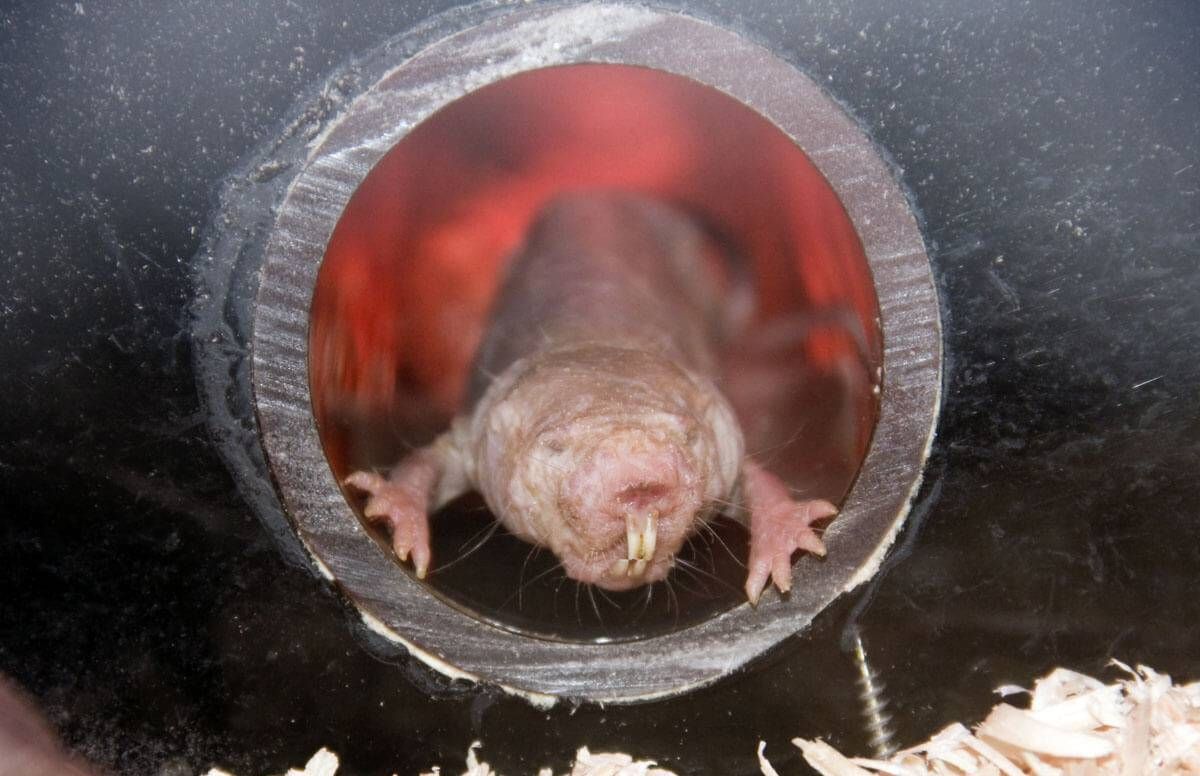What Naked Mole Rats Tell Us About Cancer and Longevity
This scientist's research shows the animal world holds keys to living longer
(Editor’s note: This article is part of an editorial partnership between Next Avenue and The American Federation for Aging Research, a national nonprofit organization whose mission is to support and advance healthy aging through biomedical research.)

When scientist Vera Gorbunova began studying longevity and DNA repair almost two decades ago, she noticed that most research in the field was being done on short-lived organisms, ranging from yeast and worms up to mice. However, she wanted to understand the biological mechanisms that enabled longer-living species, such as naked mole rats, to live cancer-free for up to 30 years — 10 times longer than mice.
That led Gorbunova, the Doris Johns Cherry professor of biology and co-director of the Rochester Aging Research Center at the University of Rochester in New York, to build a new approach to aging research — one that uses the tools of comparative biology to not only describe the differences between species, but also identify the mechanisms that cause those differences.
Gorbunova — who received a research grant in 2005 from the American Federation for Aging Research (AFAR), that helped launch her research career — is currently leading a five-year study funded by a $9.5 million grant from the National Institute on Aging that is exploring cancer prevention and longevity in longer-living rodents. She and other AFAR-supported researchers are driving discoveries that move us closer to extending healthspan, our years of health as we age. In addition to regular columns by AFAR Scientific Director Steven N. Austad, Next Avenue and AFAR are excited to share insights from the field of aging research through "Ask the Expert" interviews. Austad recently talked with Gorbunova about her research and what it means for human aging.
Dr. Steven N. Austad: Your research sheds great insight on both aging and cancer. Was cancer a part of what you were looking at from the beginning or is that something that developed over the years?
Dr. Vera Gobunova: Cancer is an age-related disease. Many of the topics that we studied were relevant to both cancer and aging, like DNA mutations and genomic instability. And when we started looking at comparative biology, we realized that many of the species that are exceptionally long-lived, like naked mole rats, are also resistant to cancer.
It’s my belief that one of the ways to prevent cancer would be to slow down aging, rather than treat the disease when it is already too late. My primary research interest is finding mechanisms of cancer resistance and longevity that have naturally evolved in long-lived animals.
What was it you saw at the time that others were not seeing that led you to focus on comparative biology?
What I wanted to do was bring a greater diversity to the molecular lab, to broaden the scope and make this leap from descriptive science and zoology to actual molecular investigations of the mechanisms. If you mutate the insulin signaling pathway in a mouse, it can live maybe 10 percent longer. But we have naked mole rats that live 10 times longer, not 10 percent. How do they achieve that? I wanted to answer that question. Because to me, it’s fascinating and that’s where the potential to find new mechanisms is so much greater. It’s like looking for your keys where you lost them, not under the street light.
When we began working with naked mole rats and squirrels and blind mole rats, we started to see unusual adaptations no one would have expected to find. For example, we discovered a mechanism in naked mole rats that makes them cancer resistant. It’s controlled by a unique molecule called hyaluronan that’s secreted by naked mole rat cells. Human cells also secrete it, but naked mole rats make 10 times more of it. The molecules in naked mole rats are also much longer than in humans. We engineered a mouse that expresses these naked mole rat genes and we’ve already observed health benefits in the mouse.
Because naked mole rats are mammals, they are very close to us, actually much closer than worms or flies. That allows us to explore those adaptations. It’s not something from another world. It’s still something that’s very applicable to human biology. We find new things in every aspect of the biology of these long-lived species that we probe. It’s very rewarding.
How close are you to translating the results of that research to humans?
We are developing pharmacological strategies on how to mimic the same condition in a patient using a small molecule. It looks very promising right now, so I’m very optimistic that something will work. In general, this is very rewarding because for a long time, people considered comparative biology to be kind of descriptive and non-mechanistic. But here, this is the proof that we can find mechanisms in long-lived animals and then explore them through other species. So now we’re looking at how to apply our findings for cancer treatment and prevention in people.
Your faculty page contains the statement: "Aging is one of the biggest mysteries of biology. ‘Why we age’ is a basic biological question, and at the same time it is highly medically relevant.” How close are we to answering that question?
We are getting closer. There is still a lot missing in the picture, but we are definitely getting closer. I think there is a general understanding among scientists in the field that aging is when our repair mechanisms don’t keep up with the damage accumulation. What type of damage occurs is the most critical thing, and researchers are working on different types of damage. There is protein damage, DNA mutations, DNA damage. More recently, people realize that epigenetic damage may be even more important. We just have to find out how to ameliorate these processes and how to repair all these types of damage.

